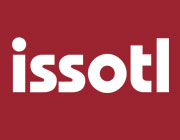Designing and Conducting a SoTL Project using a Worksheet: A Baker’s Dozen of Important Sets of Guiding Questions
- Posted by ISSOTL Admin
- Categories Blog
- Date June 6, 2017
- Comments 0 comment
Note: This blog was originally posted on June 20, 2016 by the SoTL Advocate blog. It is reprinted here with permission from the editor of the blog.
Many of us have numerous SoTL research topics or questions floating around in our minds. We have multiple ideas for design and measurement. We have thoughts, perhaps concerns, about IRB issues. We may be unsure about multiple methods/measures or whether to obtain qualitative and/or quantitative data. We are hoping to make the results and implications of the SoTL project public somehow and somewhere… and so on.
In my own efforts to begin to transform these disparate and numerous thoughts in to a solid, organized, meaningful, and practical SoTL research project, I have found that filling in a SoTL design and conduct ‘worksheet’ has been very helpful. I have also used such worksheets with faculty, academic staff, and graduate students in numerous SoTL workshops over the last fifteen years.* You may choose to fill in the worksheet all at one time (imagine there is plenty of blank space between the sets of questions!) or in multiple settings over time as you progress on the project. You may wish to answer these questions alone or to complete it with others (e.g., co-researchers, peers working on their own SoTL project worksheet).
- Think about a teaching and/or learning issue, problem, intervention, or question that you have about your students, a course, an assignment or pedagogical strategy, a program, a co-curricular experience, etc. Briefly state that as a question or questions.
- What do you already know (from theory or literature in your discipline, or SoTL or education more broadly) about this topic/question– whether it has been looked at in the past, about ways to gather data on student learning and other outcomes related to this topic or question, and what has been found in previous research on your or a similar question(s)?
- Given your question(s), what types of information or artifacts do you already have or already collect that will help you to answer this question(s)?
- Given your question(s), what other types of information or data or artifacts will you need (and from what sources) to best answer your question(s)?
- Given your question(s) and the information/data you need, what research strategies or methods (e.g., student reflections, assignments, interviews, focus groups, questionnaires/tests, observations, quasi-experiments, and so on might you use to obtain the information/data need to answer your SoTL question(s)?
- Would it be a good idea to use multiple research strategies (methods)? Which ones? Why? What about multiple measures of certain outcomes? Is your SoTL question(s) best answered with qualitative and/or quantitative data?
- What time frame is a good fit with your SoTL research question(s)? Cross-sectional? Longitudinal? Short or long-term? One semester or multiple semesters? How many data points do you need to best answer your question(s)?
- How might you involve an undergraduate and/or graduate student or students in this SoTL project, not only as participants, but as a research assistant or co-researcher? What nontrivial tasks could students do or assist with that would benefit both their learning and research experience as well as the SoTL study? How would this add ‘student voices’ to the project?
- What are ethical issues you should consider or might face in designing and conducting this project? Informed consent? Right to Privacy? Protection from harm? Other? How will you design the study to reduce ethical problems and to protect participants? What are any local IRB issues or procedures you should consider/plan to address? Where/how can you get help with your IRB protocol if needed?
- What are some potential practical problems you might face in conducting this SoTL study? Limited time? Limited funds? Lack of expertise for part of the project? Limitations to using the best design? No available co-researchers? How will you deal with these practical problems? What faculty support units and internal pots of funds could you apply for/use?
- With whom can you share your initial (above) ideas for a SoTL study (SoTL researchers and/or relevant disciplinary colleagues) for feedback? What changes in the design does their feedback imply?
- Who are the audience(s) you hope to reach and to impact with this SoTL project and results (students, disciplinary and SoTL colleagues, administrators, community members, tenure and promotion committee members, and so on)? How can you best represent this project to convey it and its’ value clearly to these audiences (e.g., presentation, publication, internal report, video, blog post, creative product, etc.)?
- What are possible peer-reviewed outlets (conferences, journals, juried shows, web sites…) you can use for this representation to make it public? Who can peer-review your draft representation before you submit?
*A simpler (and much older) version of a SoTL design worksheet was published in McKinney, K. 2007. Enhancing Learning through the Scholarship of Teaching and Learning: The Challenges and Joys of Juggling. Jossey-Bass.




